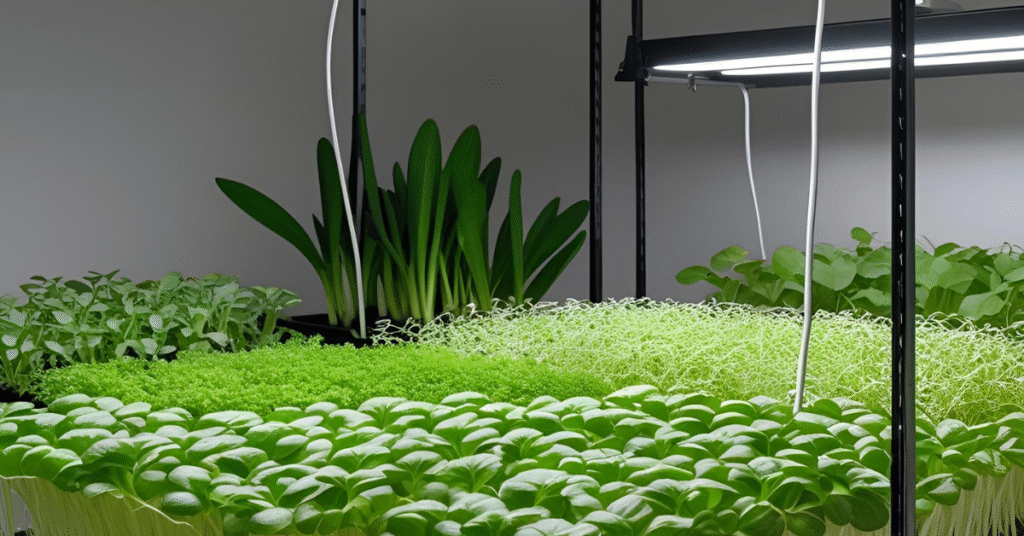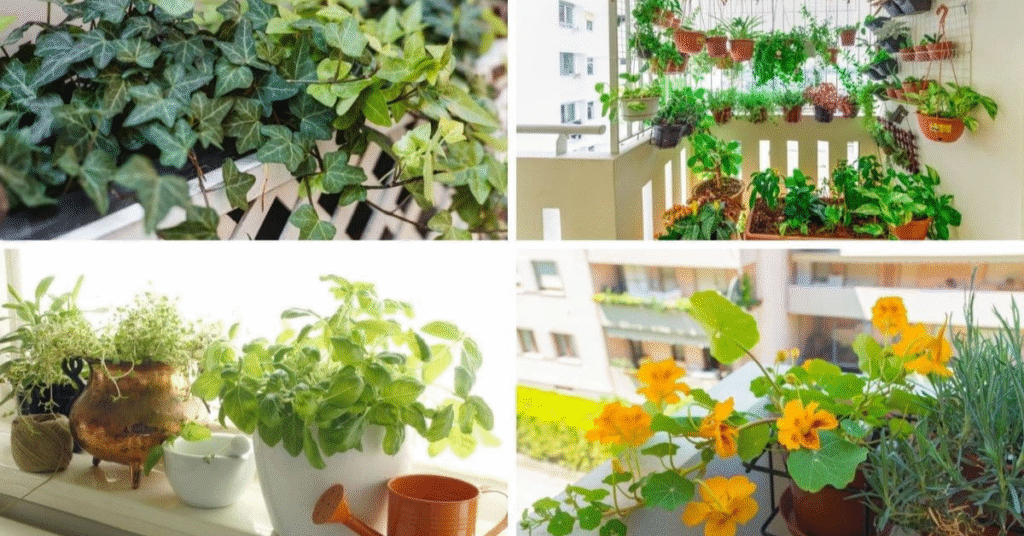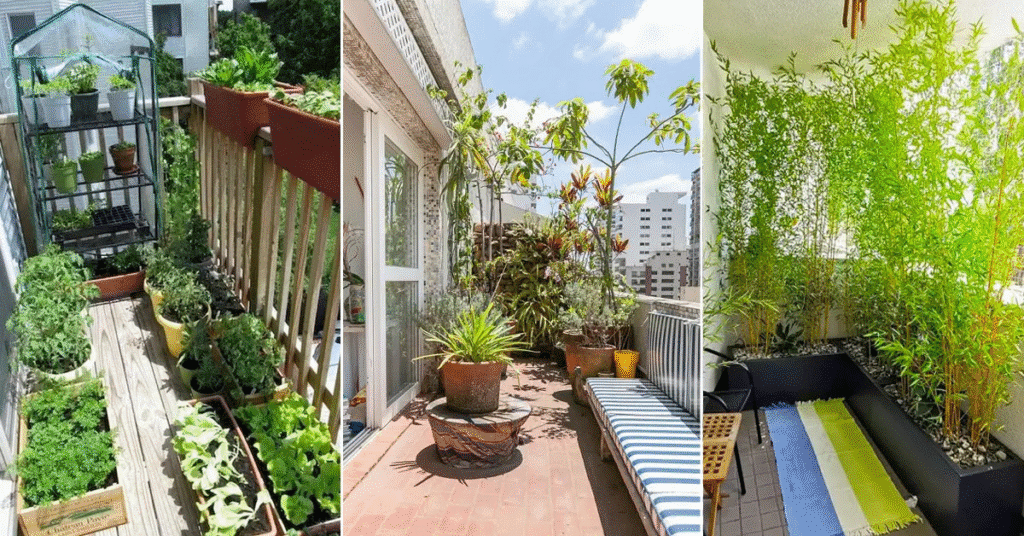How much sunlight do herbs need? This fundamental question determines the success of your herb garden, whether you’re growing fragrant basil on a sunny windowsill or cultivating a diverse outdoor herb patch. Most herbs require 4 to 8 hours of direct sunlight daily, but the specific needs vary dramatically between different herb varieties and growing conditions.
Understanding herb sunlight requirements isn’t just about counting hours – it’s about creating the perfect environment where your herbs can develop their signature flavors, aromas, and therapeutic properties. Mediterranean herbs like rosemary and oregano thrive in blazing full sun, while delicate herbs like chervil prefer gentle partial shade.
Quick Sunlight Facts for Herbs
• Minimum Light: 4 hours daily for shade-tolerant herbs
• Optimal Light: 6-8 hours for most Mediterranean herbs
• Indoor Growing: South-facing windows work best
• Grow Lights: 14-16 hours needed for artificial lighting
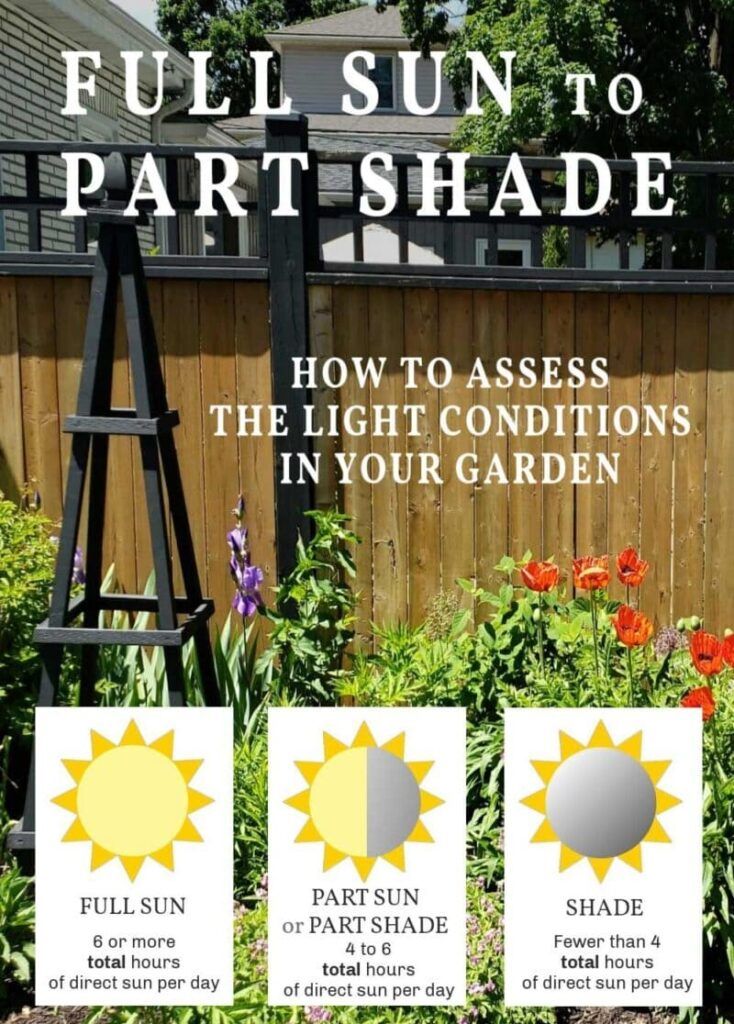
Understanding How Much Sunlight Herbs Need: The Science Behind Light Requirements
The amount of sunlight herbs need directly correlates with their ability to produce essential oils, develop robust flavors, and maintain healthy growth. Sunlight drives photosynthesis, but for herbs, it serves an additional crucial function: triggering the production of aromatic compounds that make our culinary herbs so valuable.
The Three Categories of Herb Light Needs
Full Sun Herbs
6-8+ hours daily
Mediterranean origins, drought-tolerant, intense flavors. Examples: Basil, Rosemary, Oregano, Thyme, Sage
Partial Sun/Shade
4-6 hours daily
Adaptable varieties, forest understory origins. Examples: Parsley, Chives, Mint, Cilantro, Lemon Balm
Shade Tolerant
2-4 hours daily
Woodland natives, delicate leaves. Examples: Chervil, Sweet Woodruff, Wild Ginger, Angelica
Daily Sunlight Hours by Herb Category

Specific Sunlight Requirements: How Much Light Do Popular Herbs Need?
Each herb has evolved in different natural environments, creating unique sunlight requirements. Here’s a comprehensive breakdown of how much sunlight specific herbs need to thrive in your garden.
Full Sun Champions (6-8+ Hours)
Basil
Light Need: 6-8 hours direct sunlight
Heat-loving tropical herb that develops its signature flavor under intense sunlight. Without adequate light, basil becomes leggy and loses its aromatic oils.
Rosemary
Light Need: 8+ hours direct sunlight
Mediterranean native requiring maximum sun exposure. Develops woody stems and concentrated needle-like leaves under full sun conditions.
Oregano
Light Need: 6-8 hours direct sunlight
Produces strongest flavor compounds in full sun. Partial shade results in milder taste and increased susceptibility to fungal issues.
Thyme
Light Need: 6-8 hours direct sunlight
Drought-tolerant Mediterranean herb. Forms dense, compact growth in full sun with concentrated essential oils in tiny leaves.
Partial Sun Adaptable (4-6 Hours)
Parsley
Light Need: 4-6 hours sunlight
Versatile herb that actually prefers some afternoon shade in hot climates. Morning sun with afternoon protection prevents bitter leaves.
Chives
Light Need: 4-6 hours sunlight
Onion family member that tolerates partial shade well. Can grow in as little as 4 hours of direct sunlight with good results.
Mint
Light Need: 4-6 hours sunlight
Prefers morning sun with afternoon shade. Too much intense sunlight can cause leaf scorch and reduced essential oil production.
Cilantro/Coriander
Light Need: 4-6 hours sunlight
Cool-season herb that bolts quickly in full sun heat. Partial shade extends harvest period and prevents premature flowering.
Complete Herb Sunlight Requirements Chart
| Herb | Sunlight Hours | Light Category | Special Notes |
|---|---|---|---|
| Basil | 6-8+ hours | Full Sun | Heat lover, needs warmth + sun |
| Rosemary | 8+ hours | Full Sun | Maximum sun for best growth |
| Oregano | 6-8 hours | Full Sun | Stronger flavor in full sun |
| Thyme | 6-8 hours | Full Sun | Drought tolerant, sun lover |
| Parsley | 4-6 hours | Partial Sun | Afternoon shade beneficial |
| Chives | 4-6 hours | Partial Sun | Shade tolerant |
| Mint | 4-6 hours | Partial Sun | Prefers some shade |
| Sage | 6-8 hours | Full Sun | Mediterranean origins |
| Cilantro | 4-6 hours | Partial Sun | Cool season, bolts in heat |
| Chervil | 2-4 hours | Shade | Shade lover, delicate |
Indoor vs Outdoor: How Sunlight Needs Change for Herbs
Growing Herbs Indoors
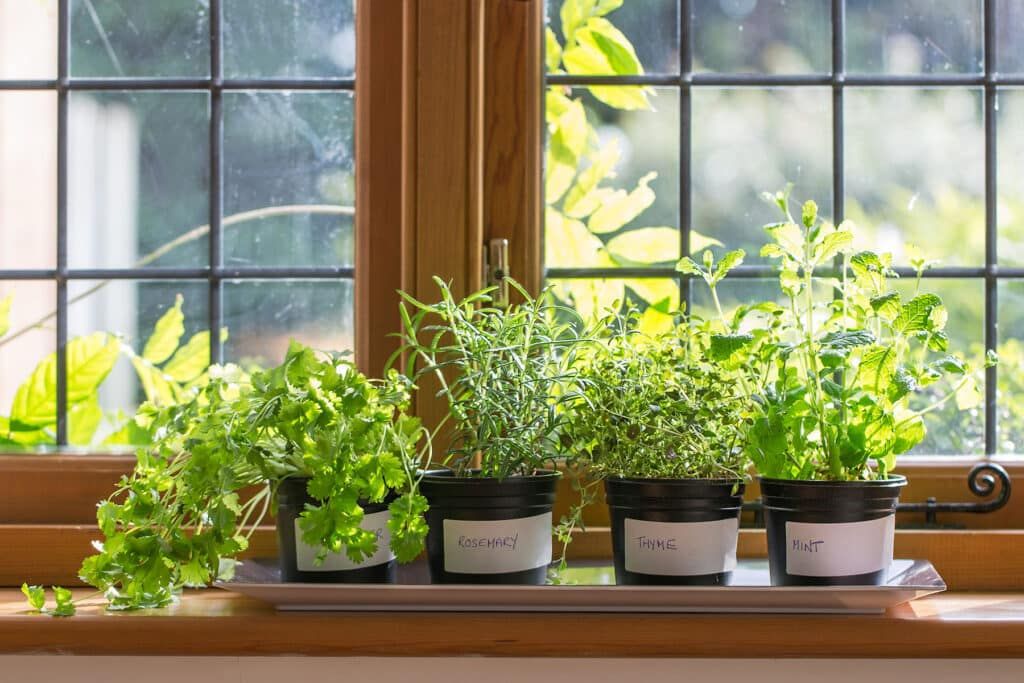
Light Challenges Indoors:
- Reduced Intensity: Indoor light is 1/10th outdoor strength
- Filtered Quality: Glass windows block UV rays
- Shorter Duration: Limited by window orientation
- Seasonal Variation: Winter dramatically reduces available light
Indoor Success Strategies:
- South-facing windows: Maximum light exposure
- Supplemental grow lights: 14-16 hours daily
- Reflective surfaces: White walls or mirrors
- Rotating plants: Ensure even light exposure
Growing Herbs Outdoors
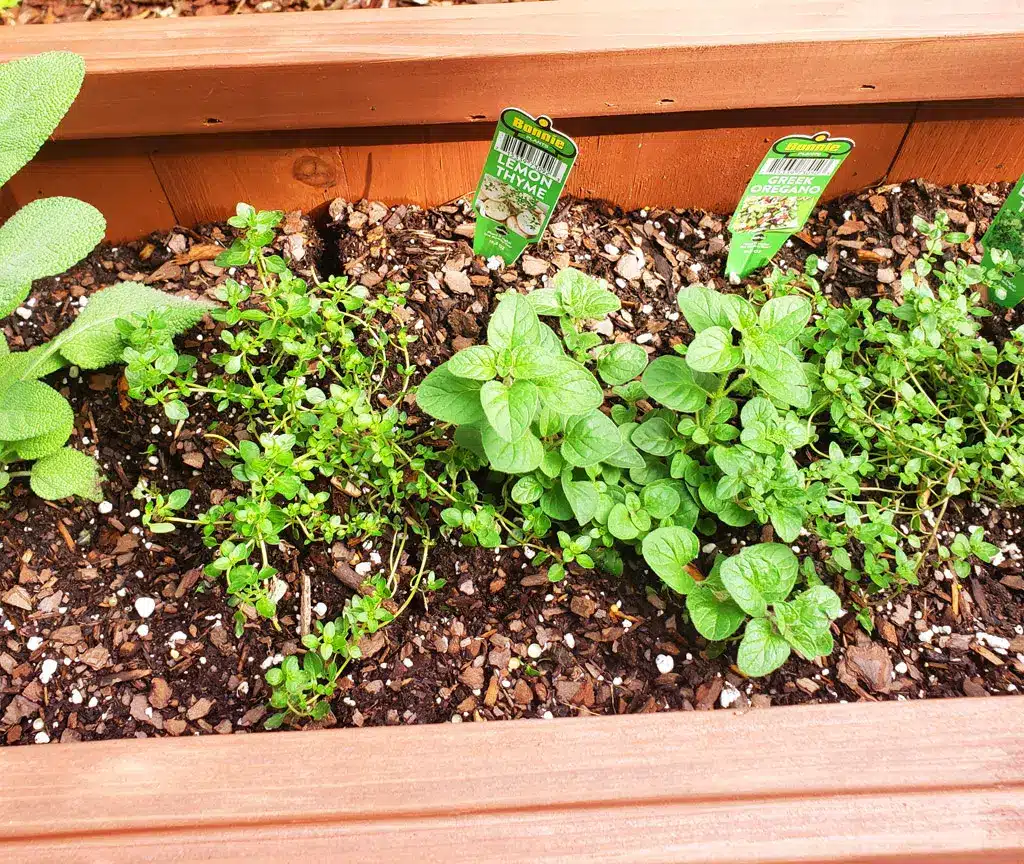
Natural Advantages:
- Full Spectrum Light: Complete UV and infrared exposure
- High Intensity: Up to 100,000+ lux on sunny days
- Natural Cycles: Seasonal light variations
- Weather Resilience: Plants develop natural hardiness
Outdoor Considerations:
- Site Selection: Observe sun patterns throughout day
- Seasonal Planning: Account for changing sun angles
- Microclimate Creation: Use structures for shade/protection
- Heat Management: Afternoon shade in hot climates
Light Intensity Comparison: Indoor vs Outdoor

Troubleshooting Light Problems: When Herbs Don’t Get Enough Sunlight
Recognizing and addressing light-related problems is crucial for maintaining healthy herb gardens. Here’s how to identify and solve common sunlight issues that affect herb growth and flavor development.
Signs Your Herbs Need More Sunlight
Leggy, Stretched Growth
Plants reaching toward light source with long, weak stems and sparse leaves. This etiolation indicates insufficient light intensity.
Pale, Light-Colored Leaves
Chlorophyll production decreases in low light, resulting in yellowing or pale green foliage instead of vibrant, dark green leaves.
Weak Flavor and Aroma
Essential oil production significantly reduced. Herbs taste bland, lack characteristic intensity, and have minimal fragrance.
Slow Growth and Small Leaves
Reduced photosynthesis leads to stunted development, smaller leaf size, and overall poor plant vigor.
Increased Disease Susceptibility
Weak plants more prone to fungal infections, pests, and general health problems due to compromised immune systems.
Solutions for Light-Starved Herbs
Relocate to Brighter Spot
Move containers to south-facing windows or sunnier outdoor locations. Track sun patterns throughout the day to find optimal spots.
Add Supplemental Grow Lights
LED grow lights 12-18 inches above plants, running 14-16 hours daily. Choose full-spectrum lights with both blue and red wavelengths.
Use Reflective Surfaces
Place mirrors, white cardboard, or reflective film behind plants to bounce light back onto leaves, increasing effective light exposure.
Prune for Light Penetration
Remove lower, shaded branches to focus energy on upper leaves receiving more light. Improves air circulation and reduces disease risk.
Choose Shade-Tolerant Varieties
Switch to herbs that naturally thrive in lower light: parsley, chives, mint, chervil, or lemon balm for problematic areas.
When Herbs Get Too Much Sunlight
Warning Signs:
- Leaf Scorch: Brown, crispy edges on leaves
- Wilting: Drooping despite adequate water
- Bleached Foliage: Pale or white patches on leaves
- Premature Flowering: Bolting due to heat stress
Quick Fixes:
- Shade Cloth: 30-50% shade during hottest hours
- Companion Planting: Use taller plants for natural shade
- Mulching: Keep roots cool and conserve moisture
- Timing: Harvest in early morning when oils are concentrated
Seasonal Sunlight Changes: How Much Light Herbs Need Throughout the Year
Understanding how seasonal changes affect herb sunlight requirements allows you to maintain productive gardens year-round. Light intensity, duration, and angle shift dramatically with the seasons, requiring adaptive strategies for continued herb success.
Spring & Summer (Peak Growing Season)
Light Conditions:
- Duration: 12-16 hours of daylight
- Intensity: Maximum strength (up to 100,000+ lux)
- Angle: High sun provides direct overhead light
- Quality: Full spectrum with strong UV component
Management Strategies:
- Start heat-sensitive herbs (cilantro, lettuce-leaf basil) early
- Provide afternoon shade for delicate herbs
- Increase watering frequency to combat intense light
- Use succession planting for continuous harvests
Fall & Winter (Challenging Season)
Light Limitations:
- Duration: 8-10 hours of daylight
- Intensity: Reduced to 1,000-5,000 lux outdoors
- Angle: Low sun creates more shadows
- Weather: Cloudy days further reduce light
Winter Adaptations:
- Move containers to protected, sunny microclimates
- Install grow lights for indoor herbs (14-16 hours)
- Focus on cold-hardy perennial herbs
- Reduce watering and fertilizing
Average Daily Light Hours by Season

Frequently Asked Questions: How Much Sunlight Do Herbs Need?
How many hours of sunlight do herbs need per day?
Most herbs need 4-8 hours of direct sunlight daily. Mediterranean herbs like basil, rosemary, and oregano require 6-8+ hours of full sun, while shade-tolerant herbs like parsley and chives can thrive with 4-6 hours. The minimum for any herb is typically 4 hours, though shade-loving varieties like chervil can survive on as little as 2-4 hours daily.
Can herbs survive with indirect sunlight?
Some herbs can tolerate indirect sunlight, particularly shade-tolerant varieties like mint, parsley, chives, and chervil. However, most culinary herbs will have reduced flavor and weaker growth in indirect light compared to direct sunlight. Essential oil production, which gives herbs their characteristic taste and aroma, significantly decreases without adequate direct sunlight exposure.
How much light do indoor herbs need?
Indoor herbs need 6+ hours of bright sunlight from south-facing windows, or 14-16 hours under grow lights. Indoor light is dramatically weaker than outdoor light (often 1/10th the intensity), so supplemental LED grow lights are frequently necessary. Place grow lights 12-18 inches above herbs and use full-spectrum lights for best results.
What herbs need the most sunlight?
Mediterranean herbs require the most sunlight: Rosemary (8+ hours), Basil (6-8 hours), Oregano (6-8 hours), Thyme (6-8 hours), and Sage (6-8 hours). These herbs evolved in sunny, hot climates and produce their strongest flavors and essential oils under maximum sunlight exposure. Lavender and Mediterranean bay laurel also fall into this high-light category.
Which herbs grow well in partial shade?
Herbs that tolerate partial shade (4-6 hours of sunlight) include: Parsley, Chives, Mint, Cilantro, Lemon Balm, and Chervil. These herbs often prefer some protection from intense afternoon sun, especially in hot climates. Mint actually benefits from afternoon shade to prevent leaf scorch, while cilantro uses partial shade to extend its harvest period before bolting.
Do herbs need direct or indirect sunlight?
Most herbs prefer direct sunlight for optimal growth and flavor development. Direct sunlight triggers essential oil production that gives herbs their characteristic taste and aroma. Only truly shade-tolerant herbs like chervil, sweet woodruff, and some mints perform well in consistent indirect light. Even partial-sun herbs benefit from at least some direct sunlight during the day.
How can I tell if my herbs are getting enough sunlight?
Signs of adequate sunlight include compact, bushy growth with vibrant green leaves and strong fragrance. Insufficient light causes leggy, stretched growth, pale leaves, weak flavor, and slow development. If herbs are reaching toward a light source or developing long spaces between leaves, they need more sunlight. Healthy herbs should have sturdy stems and dense foliage.
Mastering Herb Sunlight Requirements: Your Path to Flavorful Success
Understanding exactly how much sunlight herbs need transforms ordinary gardening into a science of flavor development. From the sun-loving Mediterranean trio of basil, rosemary, and oregano requiring their full 6-8 hours of blazing sunlight, to the gentle shade-tolerant herbs like chervil and mint thriving in just 4-6 hours of filtered light, each herb tells its own story through its light requirements.
The key insight many gardeners miss is that light isn’t just about plant survival – it’s the primary driver of essential oil production that creates the intense flavors and aromas we treasure in our culinary herbs. When herbs receive their optimal sunlight requirements, they reward us with concentrated tastes that can transform any dish from ordinary to extraordinary.
Quick Reference: Sunlight Success Formula
Maximum Flavor Strategy:
- Give Mediterranean herbs 6-8+ hours direct sun
- Provide afternoon shade for cool-season herbs
- Use grow lights indoors: 14-16 hours daily
- Monitor seasonal changes and adjust accordingly
Problem Prevention:
- Watch for leggy growth (too little light)
- Check for leaf scorch (too much direct sun)
- Rotate indoor plants weekly for even exposure
- Choose appropriate herbs for your light conditions
Whether you’re nurturing a sunny windowsill herb garden or cultivating an expansive outdoor herb patch, remember that successful herb gardening is about matching each plant’s natural sunlight requirements with the conditions you can provide. Start with understanding how much sunlight your herbs need, observe their responses, and adjust your approach based on their performance. With this knowledge, you’ll consistently grow healthy, flavorful herbs that enhance every meal and gardening season.
